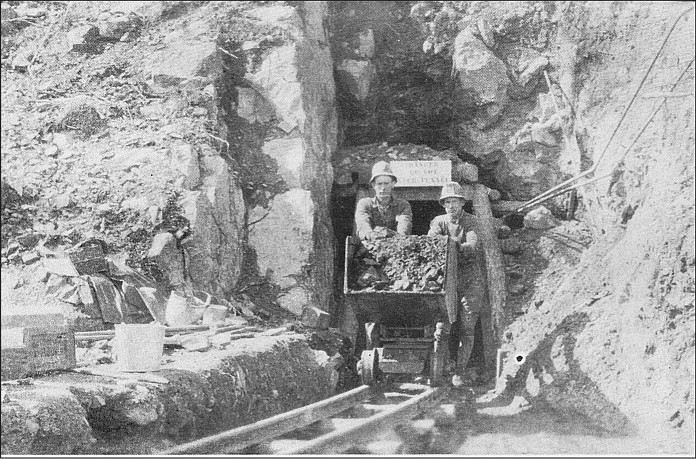ARKADELPHIA -- "Cinnabar Mining in Southwest Arkansas," a new book from the Clark County Historical Association, will make its debut at a reception and book signing at 6 p.m. today at the historic Hollywood Methodist Church, on Highway 26, about 10 miles west of Arkadelphia.
The softcover volume contains three "well-illustrated" sections: Terry Reynolds' "Arkansas's Tri-County Mercury Mining District, 1930-1945: A Historical Overview," Laverne Todd's compilation of "Clark County's Last Miner -- The Musings of Jack T. Daniel," and Wendy Richter's "Graysonia: Milling to Mining," a news release said.
Pieces of cinnabar ore and related mining artifacts will be on display when Daniel and Reynolds present brief remarks today. The booklet will be available for purchase at the free event, and both speakers will be autographing copies. The public is welcome to attend.
"Cinnabar was discovered in Arkansas in 1930, and is the primary ore from which mercury -- called quicksilver in mining circles -- is extracted. It had not been previously known to exist in the state, and this marked the nation's first major mercury discovery in decades. At the time, the United States did not produce as much mercury as it consumed and had to import from a third to a half of its needs, giving the find an even greater significance," the release said.
"In the early 20th century, people used mercury for many purposes. In fact, a good number of pharmaceuticals contained it. Among the well-known items was the once-popular Mercurochrome, designed to kill bacteria on the skin. Mercury was also used in fungicides and insecticides. Thermometers and barometers utilized it. In industry, mercury was a component of fluorescent and vapor lamps, and served as a catalyst in production of critical chemicals such as chlorine and caustic soda. Militaries around the world considered it a necessary strategic material," it said.
"Cinnabar's discovery in southwest Arkansas came during the Great Depression. Many locals as well as speculators and prospectors hoped to find work and even dreamed of becoming wealthy by seizing opportunities offered by mining the ore found in Howard, Pike, and Clark counties. As events unfolded and men poured into the area, a 1932 Time magazine story even called it a 'quicksilver rush.' Between 1931 and 1935, more than 20 companies incorporated to mine quicksilver in the area, in addition to many individuals and other entities," the release said.
In 1931, the economic downturn of the Depression combined with a dwindling supply of timber resulted in closure of the timber mill at the Clark County town of Graysonia.
"However, after the discovery of cinnabar, the mill's closure proved to be a blessing in disguise," it said. The Arkansas Quicksilver Company of Prescott brought its smelting operation to Graysonia and began operations there. The first bulk shipment of Arkansas mercury left Graysonia in April of 1932.
Daniel, 97, of Clark County, "may very well be the 'Last Miner.'" Daniel began work in the cinnabar mines as a teenager, and his experiences as an entry-level worker and then as a more skilled dynamiter are described in the CCHA's new publication.
"Daniel tells of several dangerous incidents during his time in the mines as well as of the exhausting work done by the men. The fascinating story reveals not only the hazardous conditions he faced in the mines, but also his daily earnings of $2.82 and every Friday payday," the release said.
For more information about Clark County history or the CCHA, visit http://www.clarkcountyarhistory.org or call 501-626-0807.
